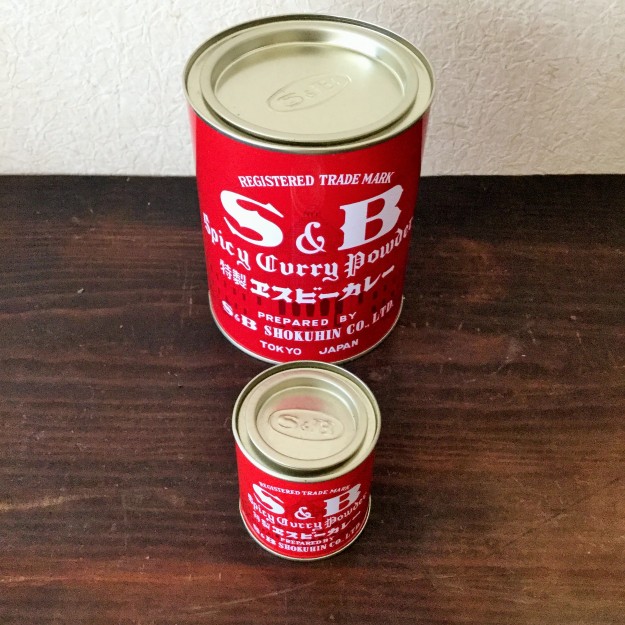
Switched to the professional-use size to reduce packaging waste. Although the price is less than four times, the quantity is more than ten times!


Switched to the professional-use size to reduce packaging waste. Although the price is less than four times, the quantity is more than ten times!
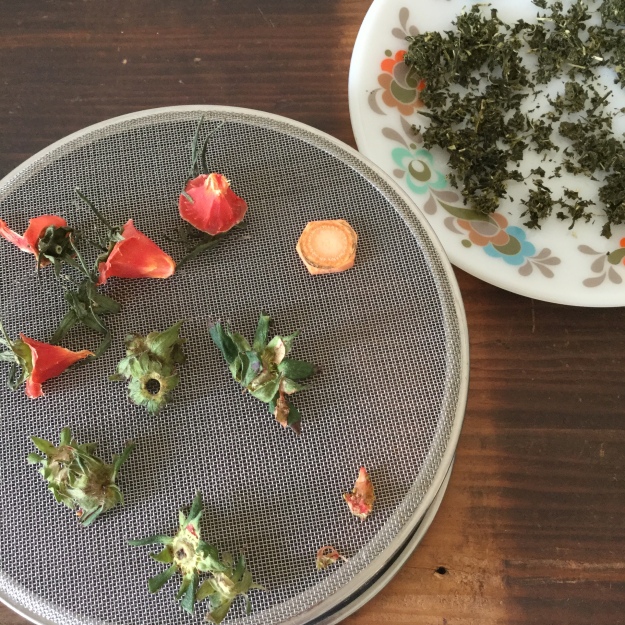 Generally, veggie scraps are burnables in Japan. But it is very wasteful because vegetables consist of 80% of water. That means burning vegetable equals burning water! So, before getting my composter, I used to dry veggie scraps and tea grounds before throwing them away.
Generally, veggie scraps are burnables in Japan. But it is very wasteful because vegetables consist of 80% of water. That means burning vegetable equals burning water! So, before getting my composter, I used to dry veggie scraps and tea grounds before throwing them away.
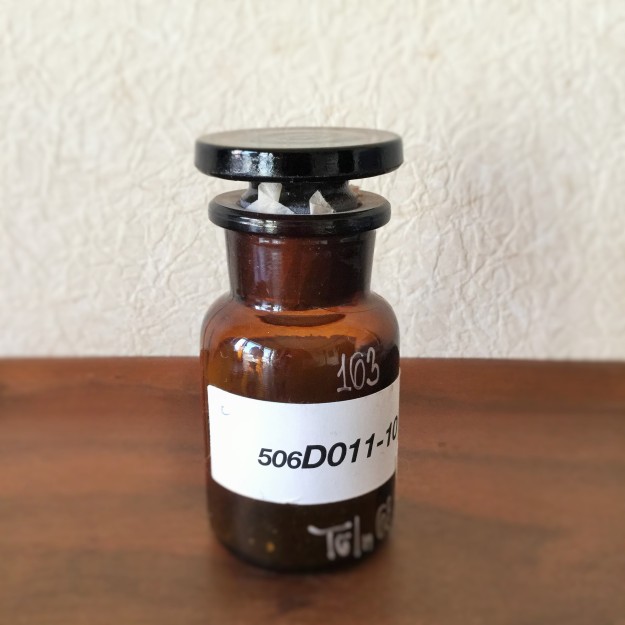 Bought at Nordic Lifestyle Market held in UN University in Aoyama
Bought at Nordic Lifestyle Market held in UN University in Aoyama
17th December, 2016
I donated clothes in good condition to “Yofukupost” for the first time today.
Why I chose Yofukupost was because:
・One of the “postboxes”, namely, the collection place was about 20 minutes’ walk from home. (There are some collection places in Tokyo, Kanagawa and more. You can also send clothes directly by mail.)
・I could donate immediately because fortunately today was a collection day. (Generally Yofukupost are held about once a month.)
How to “mail”:
Bring (or send) clothes that can still be worn, in paper bags or plastic bags, directly to the collecting places.
What to “mail”:
Clothes, shoes, bags, belts, scarves, swimsuits, underwear, kimonos, blankets, sheets, towels, handkerchiefs, curtains etc.
They also accept clothes with the owner’s name embroidered, which ordinary second hand shops wouldn’t. Thanks to Yofukupost, I could finally send away my long heavy gloomy semi-custom-made Aquascutum trench coat that never suited me.
The collected clothes are sold at overseas old clothes markets, and clothes that cannot be sold as they are can be used as wiping rags at factories.
The donating instruction above says, “in paper bags or plastic bags” (for taking donated clothes in easily, I think). Taking this seriously, I brought the clothes to donate in a new plastic trash bag because I didn’t have any disposable bag. But it turned out that I didn’t have to do such an absurd thing. There was a woman who brought clothes in a furoshiki (Japanese traditional wrapping cloth), and the staff at the collecting place received the bundle confirming with her that “You are taking back the froshiki, right?”.
Writing this post I noticed that I could also “mail” kimonos, I’ll go again and donate some unused kimonos to Yofukupost. It is really helpful for decluttering!
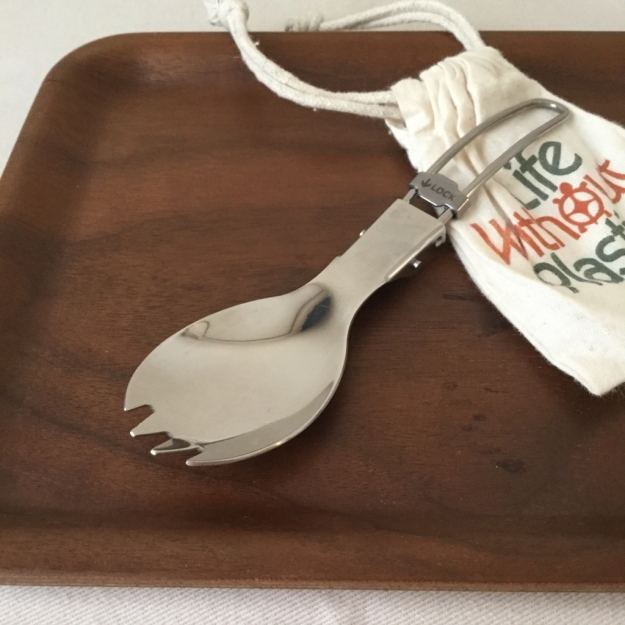
10th January, 2017
I titled my main blog written in Japanese “Itsumo Kaban ni Spork wo いつもかばんにスポークを”.
I’ve not found a good English translation for it yet. Anyway, it means “Always bring reusable cutlery like a spork with you”.
So! What’s a spork?
A spork is spoon & fork, that is, a hybrid form of cutlery taking the form of a spoon-like shallow scoop with fork tines.You can see one at shops that sell camping equipment. I bought mine by mail-order from Life Without Plastic, because I couldn’t find a foldable one in my area.
(I badly wanted a foldable one because the one Lauren Singer has looks so cute).
Now, I always throw it into my bag when I go out. However, I have to admit that, as a Japanese person, chopsticks are more practical for my everyday life…Sadly sometimes a spork alone is totally useless (for instance, at a Soba restaurant).
So I now also carry chopsticks!
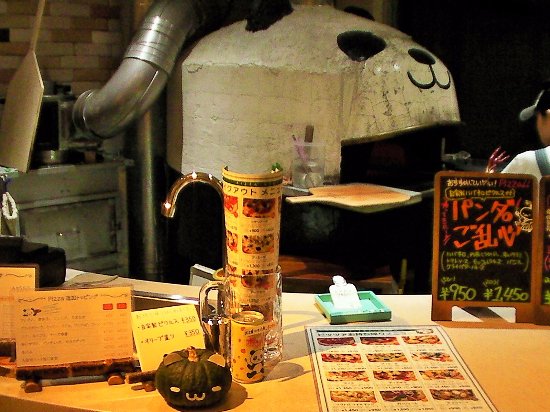
13th February, 2017
Sometimes I just want to enjoy a lazy holiday afternoon sitting on my settee and eating delivery pizza. However, a pizza delivery is inevitably accompanied by big cardboard boxes and tiny plastic pouches containing spices & seasoning oil. This is a great problem. Plastics can at least be recycled if I put in a lot of time and effort to wash them, but as the box in which the pizza comes soaks up the oil and can be no longer recycled, I have to throw it away as burnable waste. As the boxes are quite big, it is very frustrating.
Fortunately, this pizza problem was solved completely last year when a wonderful pizza place opened in my neighborhood. The name of the pizza restaurant is Agropizzeria da Panda.
The first time I visited the restaurant, I was empty-handed, namely, without any to-go containers. But the pizzas made of organic vegetables from Panda Farm looked so good that I couldn’t help but try them, even if I had to accept some disposable container waste.
I saw the price list on the wall, where it was written, “if you don’t need a box, we give a discount of 30 yen”. Oh, that’s nice.
I had to take all the cardboard boxes and the big plastic bag to carry them home as I expected. But after that, I use the boxes and the bag over and over again, by putting large plates in them so that the boxes don’t soak up the oil.

Though the pizzeria is always busy recently (because their pizza is really good, not to be compared with ordinary pizza chain stores), they let me bring my own containers for oiled olives and pickles. I really appreciate it.
Actually, it is a bit of a pain that I have to go out to get the pizza, but it’s no problem because my boyfriend is happy to pick it up. It seems to be a blissful time for him to have a glass of beer while watching the tortoise kept in the pizzeria until the pizza is done. That’s why he fetches the pizza willingly.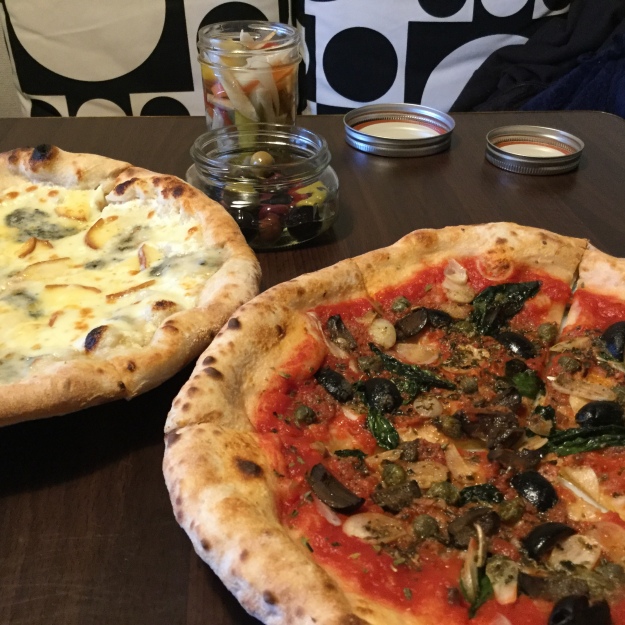

3rd April, 2017
Residual heat cooking is a cooking method to cook foods with residual heat after the foods have been removed from the heat source, by covering the pot or using a special pot for the purpose.
The best advantage of this method is the amount of greenhouse gas emissions that can be reduced and household gas charges that can be saved because the time that a pot spends on the gas is shorter. And, since heating for a long time at high temperature is avoided, nutrients remain in foods undestroyed and this helps to improve health.
I love this method because, for one reason, I don’t need to consider the amount of evaporating water, which means I don’t have to bother to taste. How much salt I should add is given according to the amount of water. So, if you put the soup in 200ml water, you just add 2g salt mechanically. That’s all. Your soup is certainly good. I have to admit that I don’t have a keen sense of taste, so this is great for me.
And, for another reason, I can remove the pot from the gas sooner once it is boiled, after that, I can settle down for other dishes without caring about what’s inside the pot.
I bought a pot invented by Dr. Kobayashi, who is a physicist, for residual heat cooking, about 10 years ago. It was quite expensive for me at that time, but I got a good enough return on my investment because this pot has been very helpful for my everyday cooking.

The structure is simple. The pot has a detachable covering around the body ( Dr. Kobayashi calls this covering “a skirt”). Installing this pot with the covering on a flat space makes room around the pot body, where heated air stays, and keeps the pot hot.

I have a space for installation in my cupboard.
When I prepare meals, I make a dish with this pot first, place it on the heat retention space, then I proceed with other work.
It might not be suitable for making meals in hurry, because there is a little bit longer waiting time until the food is cooked well-done enough. However, I’ m using it almost every day conveniently, devising the cooking order.

4th April, 2017
I got really into residual heat cooking with “Hakasenanbe はかせ鍋 (a
pot with a covering to keep heat)” , and I came to wish that I could do all
the dishes with that.
However, I’ve got only the one.
I thought about purchasing another size of Hakasenanbe, but that is too
pricy….
Actually, there is a tip for this. When the inside of the pot is hot enough
… … push it into your bed!
… Yes, I know. It is not beautiful.
Moreover, our bed is a Japanese Futon on Tatami, and I always have to worry
that my boyfriend might kick the pot over without noticing it.
It does not cost money and the heat retaining ability is quite high (I’m
doing a thermal insulation experiment with Kleen Kanteen, this futon method
keeps the highest score among other ways for now), but it is too inelegant,
I prefer not to resort to that.
In time, I found a book below in the library.
As a recipe book, this is not for me because there are broth cubes which
are used frequently as cooking ingredients that I don’t want, but I got
this book as a textbook to learn how to make a “Nabeboushi 鍋帽子
(Wadded pot cozy)” with which you can use a plain pot as a residual heat
cooking pot.
At first, I felt that I should not have made this because it doesn’t look
cool, and is too big ( a 2L pot can be put in it). Where should I put this
when I don’t use it ???
If there is anyone who is inclined for making one, I strongly recommend
that you make it with good chic fabric that goes well with your kitchen,
and you should plan where to put it in advance.
At first, I’ve been hiding it in an Oshiire (a built-in Japanese closet),
and took it out each time I used it, but it was very frustrating, so
eventually I decided to put it on the top of the cupboard shelf in my
kitchen, above my eyes.

On this place, normally it doesn’t come into my sight so I will not be
irritated at all (for the same reason the huge anodized aluminum pot is
also on top of the shelf) and when I need it, I can immediately put it on
the table etc..
Of course the heat retention function is alright, this Nabeboushi is very
active in every day’s cooking.